Homeworld Cataclysm
Review - the sequel to one of the big hits of 1999 is finally here .. or is it?
Homeworld : Cataclysm is the part-sequel, part-mission pack successor to Relic Entertainment's highly successful Homeworld. Cataclysm is not a "true" sequel to Homeworld in that it only provides a new set of missions, one new race, and a few interface and gameplay improvements over the original. However, it does not require a copy of the original to run, and unlike many mission packs it retails for the price of a full game.
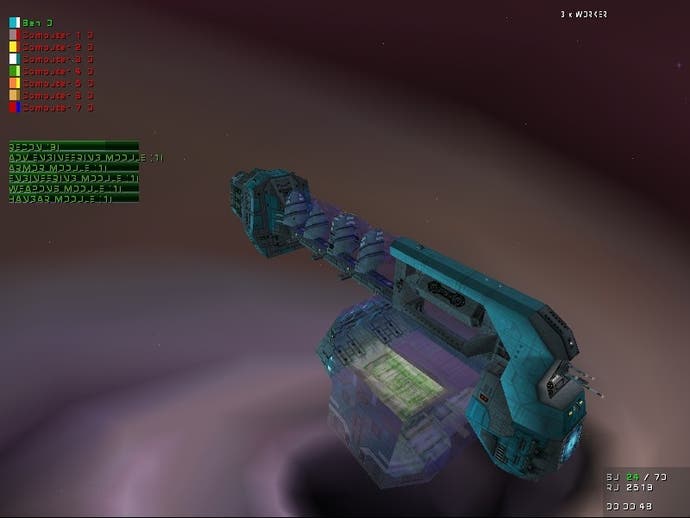
Sequel Or Mission Pack?
For anyone unfamiliar with the original game, Cataclysm is a real-time strategy game set in space. Taking its initial inspiration from traditional strategy games such as the "Command & Conquer" series, players must build up a base (or mothership, in the case of Cataclysm), and use it to construct more ships, both to gather resources (necessary for sustained construction) and to attack the enemy.
The storyline is set 15 years after the colonisation of Hiigara - the new "homeworld" reached at the end of the original game. The player takes command of what is initially an unimportant mining vessel, but as you progress through the game you gradually get given more important missions, and access to new technologies. The storyline is told through both FMV cutscenes and in-game ones, although calling it "full motion" video is something of a misnomer, as the video clips are generally rather unanimated panning shots with a voiceover. The in-game cutscenes are much more impressive though, putting the Homeworld engine to good use.
The storyline itself is quite interesting, if rather clichéd, and unlike in many games it has a direct effect on the missions - objectives are varied, and story segments frequently occur during levels. Voiceovers are used extensively, although unfortunately the actors used are a mixed bunch, with some sections sounding distinctly wooden.
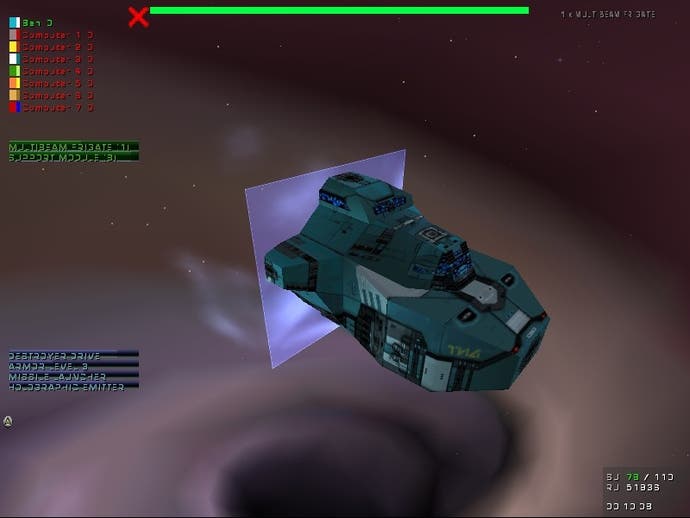
What's New?
As you might expect, Cataclysm plays very similarly to the original Homeworld, and many of the ships are simply slightly modified versions of those found in the original game. Most worthy of note are the new "worker" ships, which combine the functions of most of the original game's utility vessels into one general-purpose unit, and the Acolyte and Mimic vessels, two of which can be linked together to form a single, more powerful unit.
And in a move that will please those disappointed by the original game's carbon-copy races, a new and significantly different race (known as "the Beast") has been added, giving the game some much-needed variety, especially in multiplayer. The Beast do not have any ships of their own, but instead make use of ships stolen from other races and then duplicated. This has a significant impact on the gameplay, as whilst Somtaaw (human) players can research technologies as in the first game, Beast players must capture and reverse-engineer ships before they can research the technologies involved. This makes a huge difference to gameplay strategies, as keeping the Beast from gaining technologies is extremely important.
Another change which has a major effect on strategies is the addition of "support modules". Unlike in Homeworld, where you could build as many ships as you wanted up to an arbitrary game limit, in Cataclysm it is necessary to build these modules to increase the number of ships you can construct. Whilst this does reduce the opportunities to rush players with large numbers of smaller ships, it has the effect of slowing down the initial stages of the game massively - it is simply not possible to build enough small ships to launch a serious assault, so players are forced to research more advanced technologies before their fleet can pose a threat to others.
This is also related to another gameplay problem Cataclysm suffers from - large ships (especially motherships) are ridiculously hard to destroy without a huge number of heavy assault vessels, making fast or stealth attacks virtually worthless. This slows the game down, and frequently reduces the endgame to a simple war of attrition, which can drag on due to the limited number of support modules available, as a result of which players will often have similar size fleets.
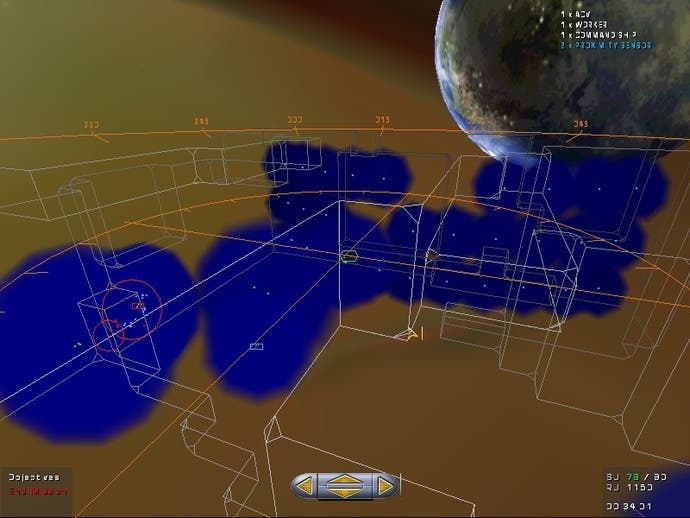
Gameplay
One of the problems with the original Homeworld was that the playing area was usually big and uniform (with the exception of resource positioning), meaning that there was little or no advantage to holding a particular position.
Cataclysm has rectified this to a large degree by adding new terrain elements such as asteroid belts (which damage larger ships that move through them), and slipgates. Slipgates are simply wormholes which allow ships to move instantaneously between two points on the map. This effectively creates "choke points" similar to those found in ground-based games, which offer a significant strategic advantage to whichever player holds them. Unfortunately your ships will not use them voluntarily, and when moving ships through a gate manually they often get spaced out and come through in small groups - a major problem if the enemy are waiting on the other side. The camera is also unhelpful, as rather than following ships through a gate it gets stuck on one side, forcing the player to manually move it to the destination point.
There have also been many minor tweaks made to the interface in Cataclysm. Sadly, many of these changes are fairly arbitrary and nonsensical - the simple button usage of the first game has been replaced with an odd mix of right and left-clicking, and many useful commands (such as the "harvest" option for worker ships) have been moved onto submenus. Fortunately the developers have included an option to switch to an original Homeworld style control system for players of the previous game, as well as the ability to turn individual modifications on and off. The changes are not all bad though - the ability to display information on selected ships and items being constructed and researched on the HUD is extremely useful.
A few of the interface changes have an effect on the gameplay as well - the addition of waypoints means that setting up patrols is now possible, it is easier to select wings of ships whilst in battle, and the fact that fog-of-war now affects resources means that it is necessary to go looking for asteroids to mine. The basic Homeworld problem of being unable to select small, fast-moving ships remains, however, meaning that micromanagement of battles is still something of a chore.
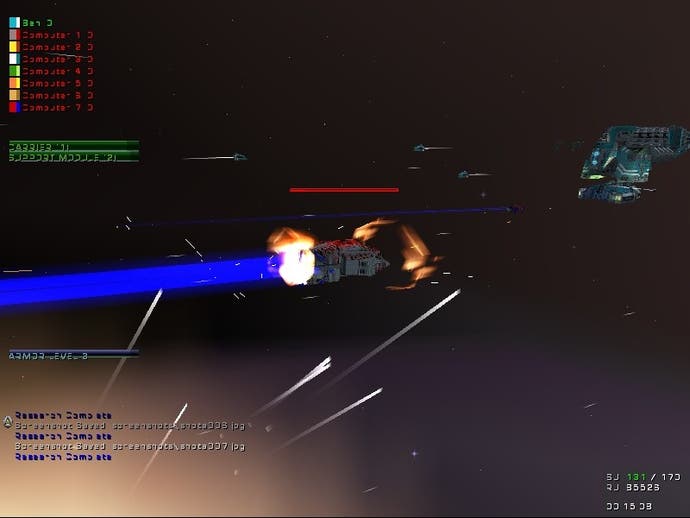
Big, Cold, And Full Of Lens Flare
This would not be much of a problem if it wasn't for the fact that the ship AI is fairly abysmal, and does not appear to have improved since the original. Ships can be put into various formations or set to be "evasive", "neutral" or "aggressive", but in battle they frequently seem to ignore these orders and do their own thing. Getting a wing of ships to all attack the same target is very hard.
Another regular annoyance is the way that selecting one ship out of an enemy wing will cause your ships to destroy that single ship and then stop (or wander off elsewhere) rather than destroying the entire wing. This poor AI often cripples the computer opponents as well, resulting in ships sitting idle during battle, or even ignoring enemies attacking them! That said, apart from this the enemy AI seems reasonably competent, managing to put up a good fight for the most part.
One area that has been improved in Cataclysm though are the graphics, which were already pretty impressive in the original game. The most obvious changes are the addition of animation on some of the ship models, and much higher resolution textures. This second change is particularly important, as ships look significantly better when they are close to the camera. More subtly, the backgrounds have been changed to include features such as lightning storms and planets (although these are strictly scenery and play no part in battles).
The sound, on the other hand, is very unremarkable. Sound effects seem to be almost identical to those in the first game, with a reasonable collection of explosions, laser sounds, and all the usual noises you expect to hear in a vacuum. The radio chatter from the ships adds to the atmosphere, although it can get annoying after a while - fortunately there is an option to turn it off. The in-game music isn't particularly bad, or particularly good - for the most part it's just very average background music. Personally I'd recommend some of the superb Babylon 5 battle music if you want something that fits the atmosphere of the game better.
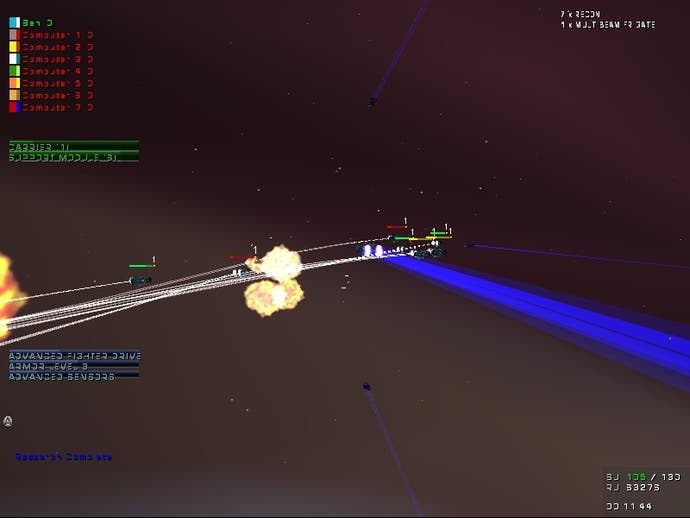
Conclusions
Cataclysm is largely more of the same. Some of the changes made to the game have improved it (the new race, slipgates, the new ships), whilst others (support modules, the interface) have made it worse. On average though, I would say that Cataclysm is marginally better than the original. The single player game is undoubtedly more enjoyable, whilst the multiplayer is still flawed but nevertheless worth a few games.
Cataclysm is very definitely worthwhile if you enjoyed the original, or if you have not played it and think you might be interested in this unique style of real-time strategy game. If, on the other hand, you were not a fan of the first game, then Cataclysm probably does not offer anything sufficiently different to warrant attention.
-
Homeworld Cataclysm screenshots
